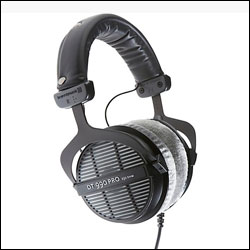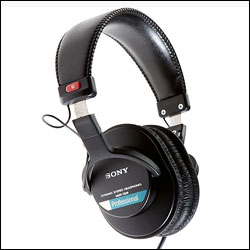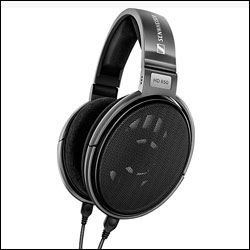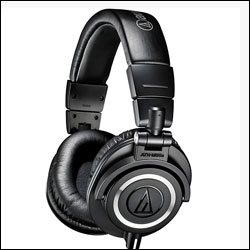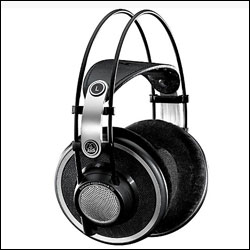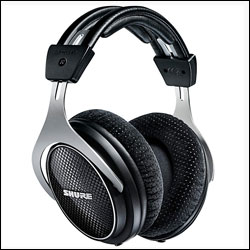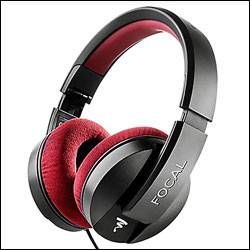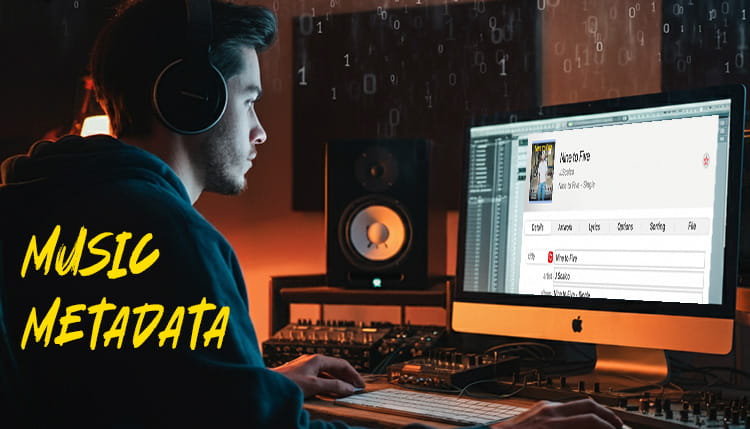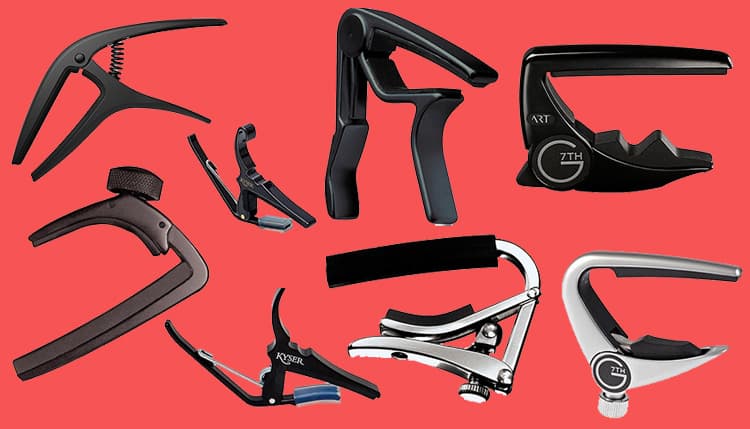Are you on the hunt for the perfect pair of studio headphones? You’re not alone!
I’ve tested countless pairs, and let me tell you, finding the right ones can make or break your productions.
Whether you’re a seasoned pro or just starting out, having the best studio headphones is crucial for accurate mixing, monitoring, and recording.
Let’s dive into our top picks and help you find your perfect audio companion!
What Makes Studio Headphones Different?
Let me tell you, when I first started out in my home studio, I had no clue what made studio headphones so special.
I mean, headphones are headphones, right? Boy, was I wrong!
I learned the hard way after trying to mix a track with my trusty old earbuds. What a disaster that was!
Frequency Response
Studio headphones are a whole different beast. First off, they’ve got this thing called a flat frequency response.
Now, don’t let that term scare ya – it just means they don’t mess with the sound.
You hear things as they really are, not all pumped up with extra bass or treble.
It’s like the difference between seeing yourself in a funhouse mirror versus a regular one.
I remember the first time I put on a proper pair of studio cans. It was like hearing my music for the first time all over again!
Suddenly, I could pick out all these little details I’d been missing. It’s crazy how much of a difference it makes.
Comfort
But it’s not just about the sound quality. These babies are built for comfort too.
I’ve had sessions where I’ve worn my headphones for hours on end, and let me tell ya, your ears can get pretty sore if you’re not using the right gear.
Studio headphones are designed with long recording sessions in mind.
They’ve got these nice, cushy earpads that feel like little pillows for your ears. Trust me, your future self will thank you for investing in a comfy pair!
Now, let’s talk durability. I’ve gone through more pairs of regular headphones than I care to admit.
They’re just not built to withstand the abuse of daily studio use. But studio headphones? These things are tanks!
I’ve accidentally stepped on mine, dropped them, and even spilled coffee on them (oops!), and they’re still going strong. They’re made to take a beating and keep on ticking.
Isolation
One thing that really sets studio headphones apart is their isolation capabilities.
When you’re trying to focus on your mix, the last thing you want is outside noise creeping in.
Good studio headphones create this little bubble of sound around your ears, blocking out distractions.
It’s like having your own personal soundproof booth wherever you go.
Here’s a quick rundown of what makes studio headphones special:
- Flat frequency response for accurate sound
- Comfy design for long sessions
- Built to last
- Great sound isolation
So, if you’re serious about your audio work, don’t skimp on the headphones. Trust me, your ears (and your mixes) will thank you!
Top 7 Studio Headphones for Music Production
1. Beyerdynamic DT 990 Pro
Breakdown: Open-back design, known for their comfortable fit and detailed sound reproduction.
Pros:
- Wide, natural soundstage
- Excellent high-frequency response
- Comfortable for long sessions
- Durable build quality
Cons:
- Bass may lack impact for some genres
- High frequencies can be fatiguing for some users
- Open-back design leaks sound
2. Sony MDR-7506
Breakdown: Closed-back design, industry standard for decades, known for their reliability and accurate sound.
Pros:
- Neutral, balanced sound signature
- Foldable design for portability
- Affordable price point
- Durable and long-lasting
Cons:
- Somewhat dated design
- Can be uncomfortable during long sessions
- Lacks detachable cable
3. Sennheiser HD 650
Breakdown: Open-back design, renowned for their natural and detailed sound reproduction.
Pros:
- Exceptional midrange clarity
- Smooth, non-fatiguing sound
- Comfortable for extended use
- Detachable cable
Cons:
- Expensive
- Requires a good amplifier to shine
- Bass may lack impact for some users
4. Audio-Technica ATH-M50x
Breakdown: Closed-back design, popular among both professionals and enthusiasts for their versatility.
Pros:
- Well-balanced sound signature
- Good isolation
- Foldable design
- Detachable cables included
Cons:
- Can be bass-heavy for some applications
- Ear pads may wear out quickly
- Clamping force may be too tight for some users
5. AKG K702
Breakdown: Open-back design, known for their spacious soundstage and detailed sound.
Pros:
- Large, airy soundstage
- Excellent detail retrieval
- Very comfortable for long sessions
- Lightweight design
Cons:
- Bass response may be lacking for some
- Requires a powerful amplifier
- Not suitable for tracking due to open-back design
6. Shure SRH1540
Breakdown: Closed-back design, premium option known for their comfort and clear, detailed sound.
Pros:
- Excellent sound isolation
- Clear and detailed across all frequencies
- Very comfortable with premium materials
- Durable construction
Cons:
- Expensive
- May be too bulky for some users
- Cable lacks inline controls
7. Focal Listen Professional
Breakdown: Closed-back design, offering a balance between studio monitoring and casual listening.
Pros:
- Balanced, accurate sound signature
- Good isolation for tracking
- Comfortable for long sessions
- Includes carrying case
Cons:
- Relatively new to the market, less established
- Can be tight-fitting for larger heads
- Some users report quality control issues
Remember, the “best” headphones are ultimately the ones that work best for you and your specific needs.
Don’t be afraid to try out different models and see what clicks with your ears and workflow.
And hey, if you find a pair you love that’s not on this list, more power to ya!
Closed-Back vs. Open-Back Studio Headphones
Alright, let’s talk about the great debate in the world of studio headphones: closed-back versus open-back.
When I first started learning how to mix music, I had no clue there was even a difference. I just grabbed the first pair I saw and called it a day. Big mistake!
So, what’s the deal with these two types? Well, it all comes down to how the earcups are designed.
Closed-back headphones, as the name suggests, have a solid outer shell that completely encloses the back of the drivers.
Open-back headphones, on the other hand, have perforated or open earcups that allow air (and sound) to pass through.
Now, you might be thinking, “Who cares about a few holes in the earcups?” Trust me, it makes a huge difference! Let’s break it down:
Closed-Back Headphones:
- Great for isolation – they keep sound in and block outside noise
- Typically have a stronger bass response
- Can sometimes create a “pressure” feeling in your ears
- Tend to have a narrower soundstage
I remember the first time I used closed-back headphones for recording vocals.
It was like the singer was in their own little world, totally focused on their performance.
No bleed into the mic, no distractions. Perfect!
Open-Back Headphones:
- Offer a more natural, “speaker-like” sound
- Wider soundstage and better imaging
- Less fatigue during long listening sessions
- Poor isolation – sound leaks in and out
The first time I mixed with open-back headphones, it was a revelation. Suddenly, I could hear all these subtle details in the stereo field that I’d been missing before. It was like my mix opened up and took a deep breath.
So, which one should you choose? Well, it depends on what you’re doing. Here’s my rule of thumb:
- For recording: Go with closed-back. You want that isolation to prevent bleed and help the performer focus.
- For mixing: Open-back is usually the way to go. The wider soundstage helps you make better decisions about panning and depth in your mix.
- For mastering: Either can work, but many mastering engineers prefer open-back for their neutral sound.
Of course, there are always exceptions to the rule. I know some folks who swear by mixing on closed-back headphones, and more power to ’em!
At the end of the day, it’s all about what works best for you and your ears.
Popular Closed-Back and Open-Back Studio Headphones
Closed-Back Headphones
- Sony MDR-7506
- Industry standard for decades
- Known for neutral, balanced sound signature
- Excellent for tracking and monitoring
- Foldable design for portability
- Beyerdynamic DT 770 Pro
- Available in different impedance versions (32, 80, 250 ohms)
- Known for comfortable fit and excellent isolation
- Slightly emphasized bass and treble
- Durable build quality
- Audio-Technica ATH-M50x
- Popular among professionals and enthusiasts
- Well-balanced sound with slightly emphasized bass
- Foldable design with detachable cables
- Good isolation for studio environments
Open-Back Headphones
- Sennheiser HD 600
- Renowned for their neutral and natural sound
- Excellent midrange clarity and detail
- Comfortable for long listening sessions
- Widely used for mixing and mastering
- Beyerdynamic DT 990 Pro
- Known for their wide soundstage
- Slightly emphasized treble for added detail
- Comfortable velour ear pads
- Good for mixing and critical listening
- AKG K702
- Large, airy soundstage
- Neutral sound with slight emphasis on highs
- Very lightweight and comfortable
- Excellent for spatial awareness in mixing
Remember, if you can, try before you buy!
Everyone’s ears are different, and what sounds amazing to me might not work for you.
Don’t be afraid to visit a music store and test out a bunch of different models. Your ears will thank you in the long run!
Key Features to Consider When Choosing the Best Studio Headphones
Alright, buckle up, ’cause we’re about to dive into the nitty-gritty of choosing the right studio headphones.
Trust me, I’ve made plenty of mistakes in this department, so learn from my blunders and save yourself some headaches (and ear-aches)!
Frequency Response
First up, let’s talk about frequency response and sound signature.
This is basically how well the headphones reproduce different frequencies across the audio spectrum.
You want something that’s as flat and neutral as possible.
I remember when I first started out, I was using these bass-heavy consumer headphones for mixing.
My tracks sounded great in the studio, but as soon as I played them in the car or on other speakers, the bass was way too weak. Lesson learned: neutral is the way to go!
Impedance and Sensitivity
Next, we’ve got impedance and sensitivity. Now, don’t let these techy terms scare ya – they’re actually pretty simple.
Impedance is like how “thirsty” your headphones are for power, and sensitivity is how efficiently they use that power.
Low impedance headphones (under 32 ohms) work great with phones and laptops, while high impedance cans (over 100 ohms) might need a separate headphone amp to really shine.
I learned this the hard way when I bought a fancy pair of high impedance headphones and tried to use them with my phone.
They sounded about as exciting as a wet newspaper. But plug ’em into a proper headphone amp? Holy moly, it was like hearing them for the first time!
Build Quality
Now, let’s talk about build quality and comfort.
You’re gonna be wearing these bad boys for hours on end, so they better be comfy!
Look for headphones with plush ear pads and a headband that doesn’t feel like it’s trying to squeeze your brain out.
I once bought a pair of headphones that looked great on paper, but after an hour of wear, it felt like my ears were being held hostage. Not fun.
Now I always make sure to wear potential purchases for at least 30 minutes in the store before making a decision.
Connectivity
Cable options and connectivity are also worth considering.
Some headphones come with detachable cables, which is great if you’re a klutz like me who’s always tripping over wires.
And if you’re into the whole wireless thing, there are some decent Bluetooth options out there now, though I still prefer wired for studio work.
Brand and Warranty
Lastly, don’t overlook brand reputation and warranty. A good warranty can be a lifesaver if something goes wrong.
I’ve had to use warranties a couple of times over the years, and let me tell ya, it’s a lot less painful when the process is smooth and hassle-free.
Here’s a quick checklist of things to consider:
- Frequency response (aim for flat and neutral)
- Impedance and sensitivity (match to your gear)
- Comfort (your ears will thank you)
- Build quality (durability is key)
- Cable options (detachable is nice)
- Brand reputation and warranty (peace of mind)
Remember, at the end of the day, the best headphones are the ones that work for you and your specific needs.
Don’t get too caught up in specs and reviews – trust your ears and go with what sounds good to you. Happy hunting!
How to Properly Care for Your Studio Headphones
Alright, let’s talk about keeping your precious studio headphones in tip-top shape.
I’ll be honest, I learned most of these tips the hard way. There was that time I left my expensive cans out in the sun and the ear pads got all warped.
Or when I accidentally yanked the cable and… well, you can guess how that ended. But hey, learn from my mistakes, right?
First up, cleaning. You’d be surprised how much gunk can build up on your headphones over time.
Earwax, sweat, dust – it’s not pretty. Here’s my go-to cleaning routine:
- Wipe down the headband and ear cups with a slightly damp cloth. Don’t use any harsh chemicals!
- For the ear pads, a little mild soap can work wonders. Just be sure to dry them thoroughly.
- Use a soft brush (like an old toothbrush) to gently clean the grilles. This is especially important for open-back headphones.
- Q-tips are your friend for getting into those tight spots.
Do this every couple of weeks, and your headphones will thank you.
Conclusion
Whew! We’ve covered a lot of ground in our journey through the best studio headphones.
Remember, the perfect pair for you depends on your specific needs, budget, and preferences.
Don’t be afraid to try out different models before making your final decision.
Investing in high-quality studio headphones is an investment in your craft, your ears and your music production equipment.
So, what are you waiting for? It’s time to elevate your audio game and start creating those crystal-clear mixes that’ll make your productions shine!


